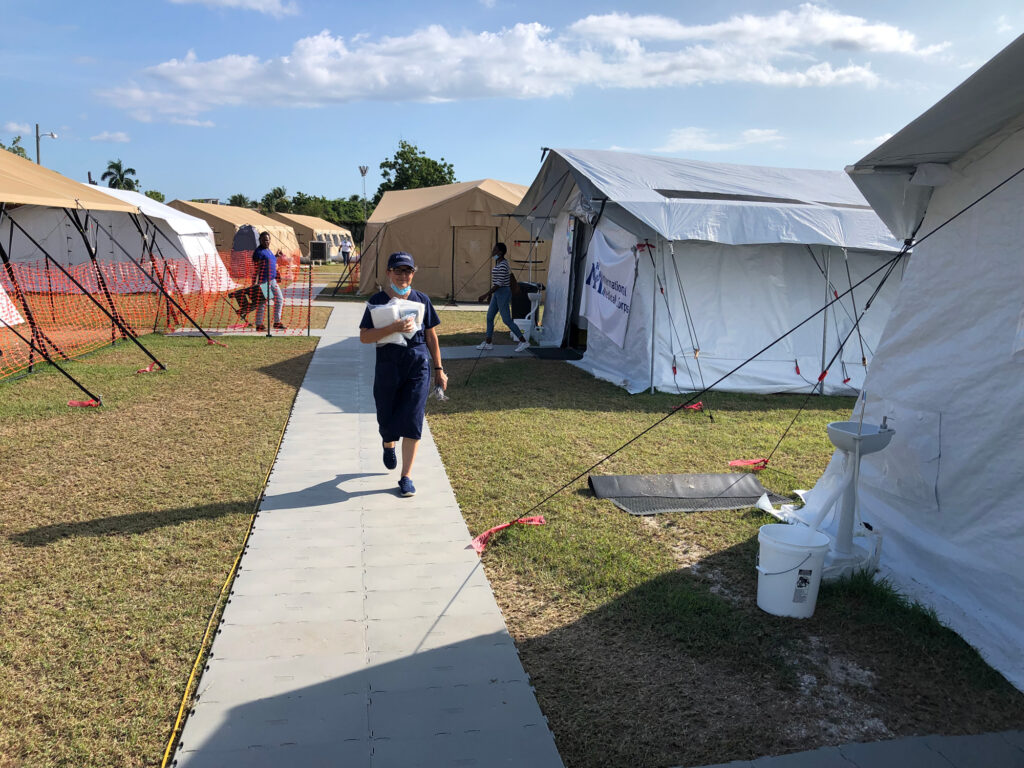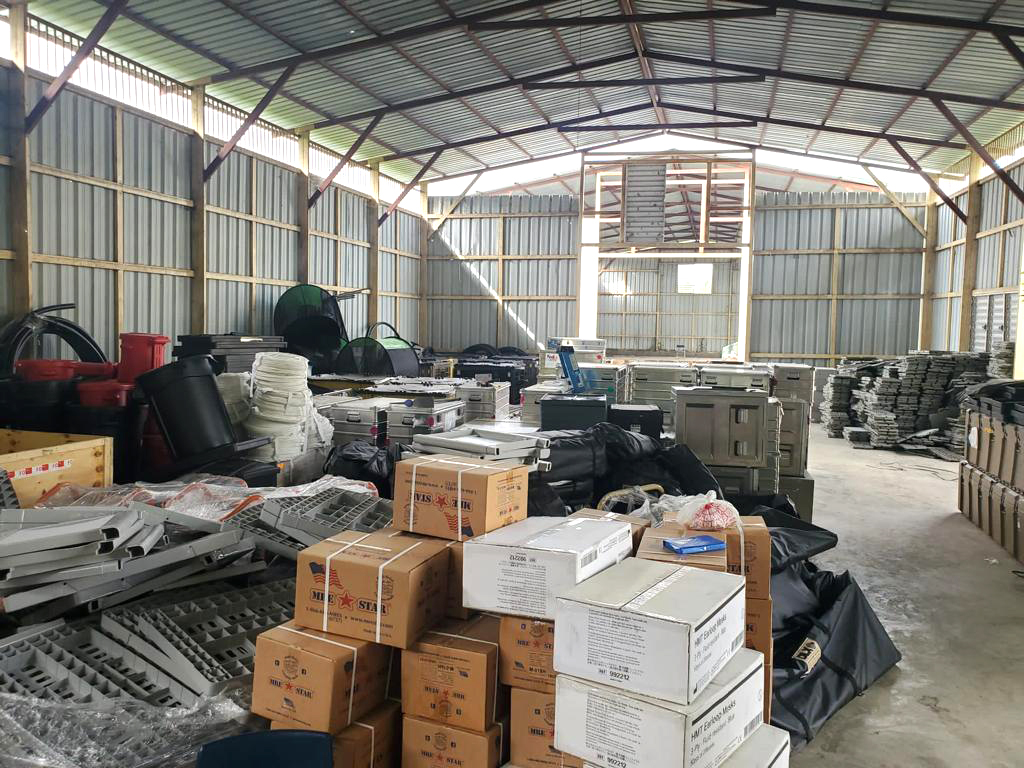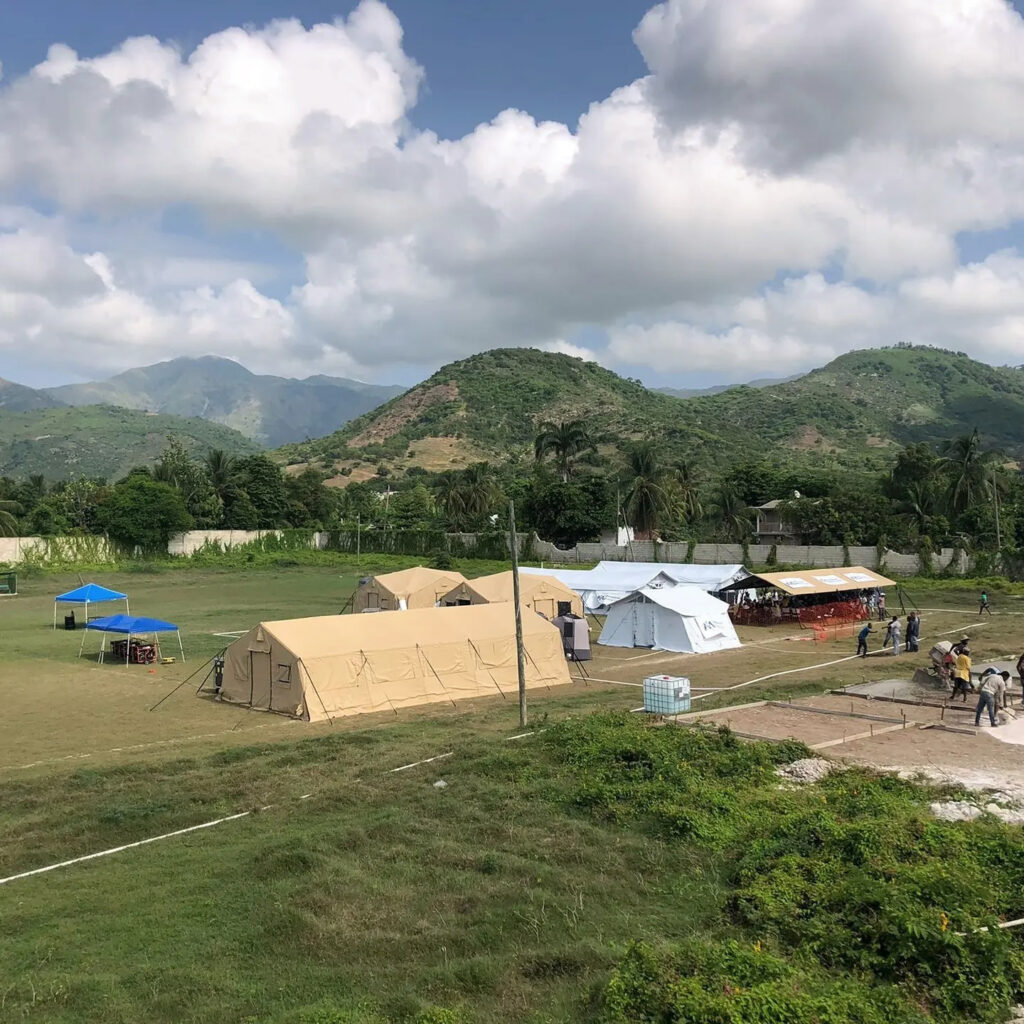“Demobilization is infinitely harder than mobilization—hands down,” says US Programs Emergency Response Lead John “JR” Roberts.
This might seem surprising. After all, it’s no small feat getting our Emergency Medical Team (EMT) Type 1 field hospital, as well as a crew of volunteers and staff, into a country that’s just experienced a major natural disaster or is in the early stages of conflict. Yet leaving the country after our response presents many more challenges—to such a degree that, as JR points out, “we start demobilizing from the second that we’re on the ground.”
So, what makes leaving a country so much more challenging than mobilization?
In a demobilization, staff have to think about the four S’s: supplies, staff, space and systems. During an emergency, we bring supplies into the affected country, and hire staff there. We create clinical space and set up medical systems. When we leave, we have to determine what will happen to these things and people.
“During deployment, we build a lot of relationships on the ground that need to be followed up on. We have to make sure that all of our bills are paid, and that all of the people who worked for us are paid,” JR says. “We have to decide where our supplies are going. Where are our tents—our clinical space—going? How do we change the systems we implemented so they’ll meet the needs of the people who take over those systems once we’re gone? What do we do with the medical records we generate?” All of this requires a high level of accountability.
Whenever we conduct an emergency response, we work with local partners, including a local liaison from the Ministry of Health (MoH), who works closely with us while we’re on the ground and who can help us transition our systems and records into new hands once we leave. When we began our most recent demobilization—departing Haiti in late 2021 after deploying there in September, following an August earthquake—we informed the MoH, local city officials, the nearby hospital and other NGOs of our plans.

Communication Is Key
Once we closed down the EMT where we’d been providing medical services to patients, we transitioned our support to the local hospital for a full month, bolstering the hospital’s capacity to absorb any additional pressure placed on their services as a consequence of the EMT’s closure, and ensuring the most sustainable approach to our exit strategy. We kept our pharmacy open until the last possible moment to ensure the integrity of our cold chain. Once we demobilized the pharmacy, we immediately transferred the remainder of our medicines both to the pharmacy at the local hospital and to the MoH.
We also talked to patients who came to our clinic, while putting up signs detailing how the process would work. “Another challenge was to appropriately explain the rationale for the demobilization to patients and other stakeholders, all of whom were reluctant to see the EMT go,” says Adam Jacovou, former Coordinator of our country programs in Haiti. Adam said that the desire for us to provide services both demonstrates the value we provide to a community during a response and indicates the gaps in the country’s healthcare system that remain.
In addition to the discontinuation of our clinical services, we also had to consider individual programs we’d set up for gender-based violence (GBV), mental health and psychosocial support (MHPSS), and water, sanitation and hygiene (WASH). After the EMT was demobilized and ceased to function as a central point for capturing cases and referrals, we moved our GBV and MHPSS activities into separate dedicated spaces, continuing the programs as normal until we left the country.
“We had to figure out how each of these programs should wind down—you can’t just stop providing services all at once, because then you’re leaving a gap in that place,” JR says. “At all times, we try to wind down slowly, making sure that everybody who needs those services has a place to go to continue the care they were receiving.”
Taking Stock
As local communities recovered from the earthquake and demand for our services wound down, our Logistics team was hard at work, designating where our equipment should go once we left. When we arrived in Haiti in September 2021, we brought 143 pallets of supplies—including our 6,340-square-meter (20,800-square-foot) EMT—with us. But when we left in December, we took only four pallets back.
“It costs money to get our cargo back into the US, and it depends on regulations—it’s actually not easy to export things from Haiti to the US,” explains Ronny Elfassy, our Manager of Logistics for Emergency Response and Preparedness. “We have to look at the pros and cons to see if it’s worthwhile to bring things back with us.”
The Logistics team takes inventory of the contents of every tent and categorizes each item, enabling them to decide whether we should ship it back to the US, donate it to local healthcare providers or responsibly dispose of it. In all demobilizations, we primarily focus on bringing back reusable high-value items such as laptops, smartphones, VHF radios and other communications equipment. Then we look for items we can donate to local organizations or the MoH.
“Here we’re looking at items that are too costly to recover. We try to find recipients who can benefit from the equipment and who won’t be burdened by it,” Ronny says. “For example, if you give someone a piece of equipment with parts that need to be changed every few weeks, and those parts are costly or hard to access in Haiti, then you’re dumping something on them that they can’t maintain. And that’s not fair.”
When we first arrived in Haiti, a local NGO offered us the use of their land for our field hospital. When we demobilized, we left behind supplies that the NGO could use for its own outreach activities—providing us with the opportunity to give back to a local organization that had generously given space to us. We also donated our water purification system to a local WASH-focused NGO, because the system was used to treat dirty water in a country where cholera is endemic, and importing it into the US thus would have been difficult.
Not everything can or should be kept or reused. When we have items that we can neither recover nor donate during demobilization, we work closely with the WASH team to dispose of those items in line with local customs and regulations, ensuring that nothing is discarded in a way that would be environmentally unsafe.
Because we come back from deployment with such a small fraction of the supplies we take with us, the restocking process begins right away. “We were placing orders for new equipment, supplies and tents before I even left Haiti, early in the response,” JR says.

How Do You Close Down a Field Hospital?
When it came time to take down our EMT tents—which we donated to a handful of NGOs, the MoH and a local hospital—we invited the recipients to help, so they’d know how to rebuild them in the future. And though we have to be able to set up our EMT and start offering services within 48 hours, taking it down takes considerably longer. “We really want to make sure we do it well,” Ronny says. “If we pack a tent that’s missing one item, and because of that one item the tent can’t be rebuilt, then that really defeats the purpose. It basically becomes garbage.”
The EMT is made up of different components, and the team starts by taking down the health facility. The staff facilities are the last parts of the EMT to come down, enabling staff and volunteers to continue to live and work there until the end. Meanwhile, the WASH team deals with any biohazardous waste and does decontamination work at the site as needed. Then the team conducts a final cleanup to hand the site back to its owners in good shape.
“Basically, you want to leave no trace and make sure you left the area in either the same condition or better condition than when you got there,” Ronny says.
On top of site inventory, teardown and cleanup, the Logistics team also makes sure every staff member and volunteer gets home safely. Travel from Port-au-Prince to our site in Aquin had been dangerous in September—gangs along the roads set up roadblocks to loot cargo and kidnap travelers—and departing was just as difficult. Instead of traveling by car, staff members and volunteers had to take domestic flights from Aquin to Port-au-Prince, then transfer to the international airport for their trips home.
Lessons Learned
Once demobilization is complete, the team creates an after-action report detailing lessons—from volunteers and beneficiaries as well as staff—that need to become institutional knowledge for future deployments and demobilizations.
Lessons from the Haiti deployment included bringing a higher quantity of certain supplies—such as pregnancy tests and COVID tests—into the country, and finding better ways of streamlining volunteer management. There were no big, overarching lessons from Haiti, but even small lessons such as these will help make the difficult processes of deployment and demobilization a little bit easier in the future.
